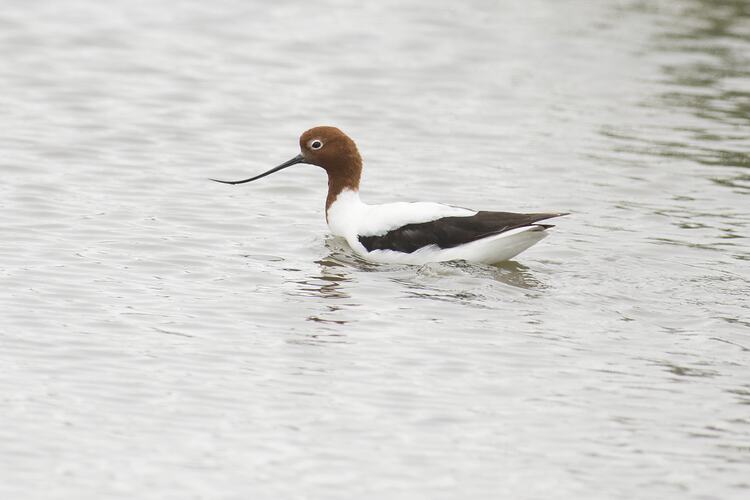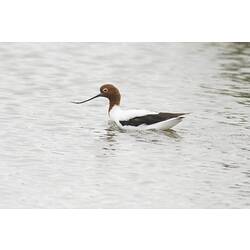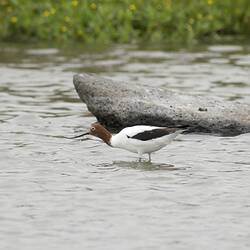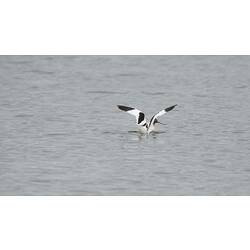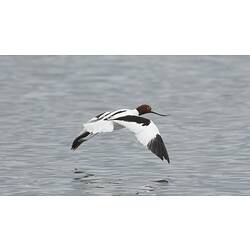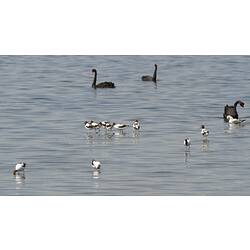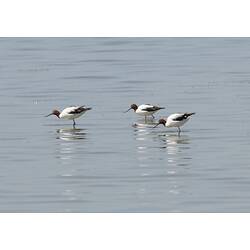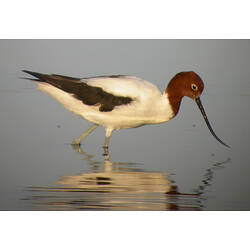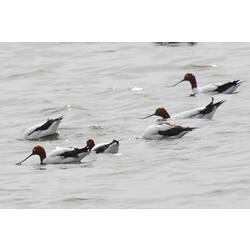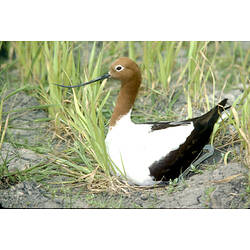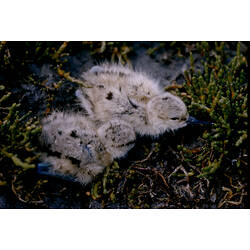General Description
A tall wading bird. A white body with two black stripes along the back and black wing tips and bars. Their neck and head are chestnut brown with a white eye ring. They have an unmistakable long, slender black bill that curves upwards. Their legs are long and pale grey. Bill to tail length is up to 45 cm. They extend their legs straight behind their body when flying. The sexes are similar, but the males have a more sharply upturned bill.
Biology
Red-necked Avocets breed in loose colonies, rearing a single brood. They generally breed around August to September but this can vary from year to year. During courtship, birds will cross their bills and perform bowing dances, often in shallow water. Their nest is a shallow scrape lined with water plants in which they lay a clutch of three to four eggs. They are highly nomadic in response to rainfall, moving in small flocks in search of suitable habitat. They can be seen wading in shallow water sweeping their bills back and forth below the surface searching for aquatic insects and their larvae, crustaceans and seeds. They will also swim and feed by up-ending.
Distribution
Mainland Australia, but breeds mainly in the south-western interior. A nomadic species, moving in small flocks.
Habitat
Freshwater and saltwater wetlands and estuaries.
More Information
-
Animal Type
-
Animal SubType
-
Brief Id
A mostly white shorebird with a distinctive reddish-brown head and neck, with a long black upturned bill and a white eye ring.
-
Colours
White, Black, Brown, Red
-
Maximum Size
45 cm
-
Habitats
-
Diet
Omnivore
-
Diet Categories
Aquatic plants, Insects, Crustaceans
-
Endemicity
-
Commercial
No
-
Conservation Statuses
CITES: Not listed, FFG Threatened List: Not listed, EPBC Act 1999: Not listed, IUCN Red List: Least Concern
-
Taxon Name
-
Common Name
Red-necked Avocet
-
Kingdom
-
Phylum
-
Subphylum
-
Class
-
Order
-
Family
-
Genus
-
Species Name
novaehollandiae
